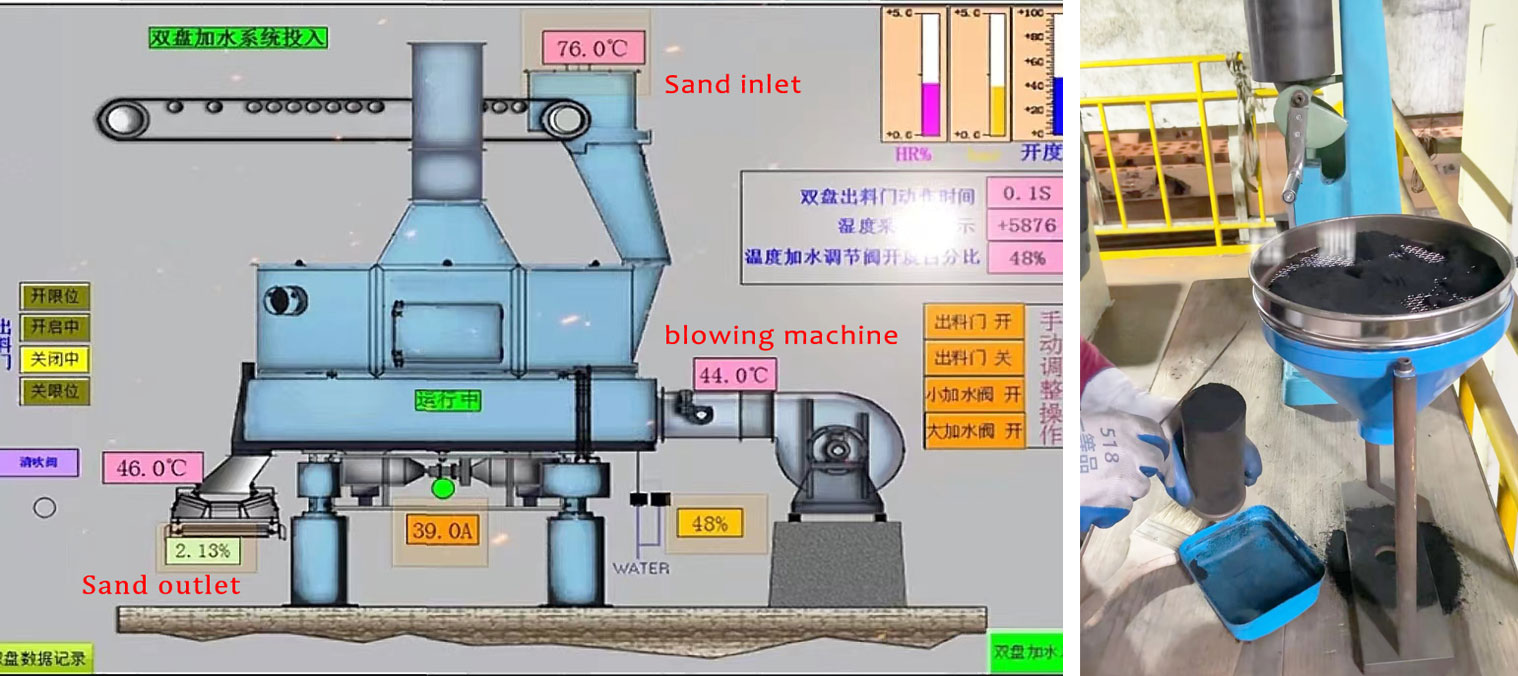-

-
Guangzhou Zhongzhu Machinery Co. LtdSand casting molding machine manufacturer
-
008613926238353 WhatsApp:
-
E-mail: 470199755@qq.com

Using tidal sand as a casting material to produce castings is a relatively traditional and widely used casting process, suitable for casting iron based castings, and also commonly used in the production of copper based castings. The difference between this casting process and other casting processes is that most of the old sand can be recycled through appropriate treatment processes after tidal sand casting. Therefore, the tidal sand casting process has the greatest advantage in terms of casting material cost compared to tidal sand casting process.
At present, the main types of sand casting technology for tidal molds include manual mold molding, semi-automatic shock-absorbing molding, air impact molding, and automated casting equipment molding. With the popularization and use of automation equipment, the position of wet sand casting in casting production has become more important, and it has also faced many new problems in the production process of wet sand casting. This has prompted us to continuously strengthen our research and deepen our understanding of wet sand treatment methods. There are many factors that need attention and treatment in the treatment and mixing of tidal sand. If one or more critical conditions cannot be maintained within the control range, the mixed wet sand without good conditions will directly affect the quality of the generated castings. Due to the different system settings for sand treatment in different foundries and the use of different molding equipment, we will propose some widely recognized control points here.
1. Temperature control of old sand
The hot sand problem has been recognized as the biggest problem that clay green sand casting must face. If the temperature of the molding sand is too high, castings are prone to defects such as sand inclusion, rough surface, sand flushing, and porosity. The negative impact of hot sand on the quality of castings is mainly caused by the following aspects:
·Due to the evaporation of water caused by hot sand, it is difficult to control the performance of molding sand during sand mixing;
·During the process of sending hot sand to the molding machine, due to water loss, the performance of the molding sand changes. The actual performance of the molding sand used during molding differs greatly from the performance controlled during sand mixing;
·After molding, the moisture of the hot sand evaporates and condenses on the cold core or the surface of the mold cavity inside the sand mold, which will reduce the strength of the core and make it easy to produce pores on the surface of the casting;
·If old sand is to be stored in a sand bin for later use, hot sand is prone to adhere to the walls of the sand hopper. In severe cases, the sand hopper is filled with sand all around, leaving only one hole in the middle, causing only a portion of the sand in the system to be used periodically. This part of the sand turnover is fast, and the temperature will further increase, making the hot sand problem even more severe.
——So much high temperature sand is considered hot sand? The determination of the temperature limit of hot sand is mainly based on the problems encountered in sand mixing, molding, and casting quality. Through extensive research and practice, it has been confirmed that to ensure the stable performance of sand, the temperature should be maintained below 50 ℃. The most effective way to cool the molding sand is to spray water on the broken old sand, while blowing in a large amount of air to promote the evaporation of water. Adding water while stirring or using aerodynamics to keep the old sand in a rolling and loose state is beneficial for the ventilation equipment to timely extract the heat and water vapor generated. In a standardized tidal sand treatment system, it is also possible to increase the storage capacity of old sand appropriately, such as adding old sand storage warehouses to extend the service life of molding sand, allowing old sand to have more time to achieve cooling and cooling at room temperature;

2. Moisture control of old sand
The moisture content in the molding sand is low, the strength of the molding sand is reduced, the toughness and plasticity are poor, the sand mold is prone to breakage, which is not conducive to the detachment of the mold, and the casting is prone to defects such as sand flushing and sand holes; When the moisture content of the molding sand is high, the viscosity is strong, but the flowability and permeability of the molding sand are poor, and the compaction rate of the molding sand is low, which is not conducive to the shooting of sand by automated molding equipment and the internal exhaust of the sand mold after pouring; Therefore, in the mixing of molding sand, we should pay attention to the addition of water. After adding old sand, new sand, bentonite, and coal powder to the sand mixer for dry mixing, water should be added for wet mixing; There is no fixed proportion here, and it is necessary to control the sand within a certain humidity range with the help of sand detection instruments or the experience of technical personnel. It is also necessary to make flexible adjustments based on workshop temperature, sand temperature, storage time after mixing, and feedback on backend machine modeling and casting quality;